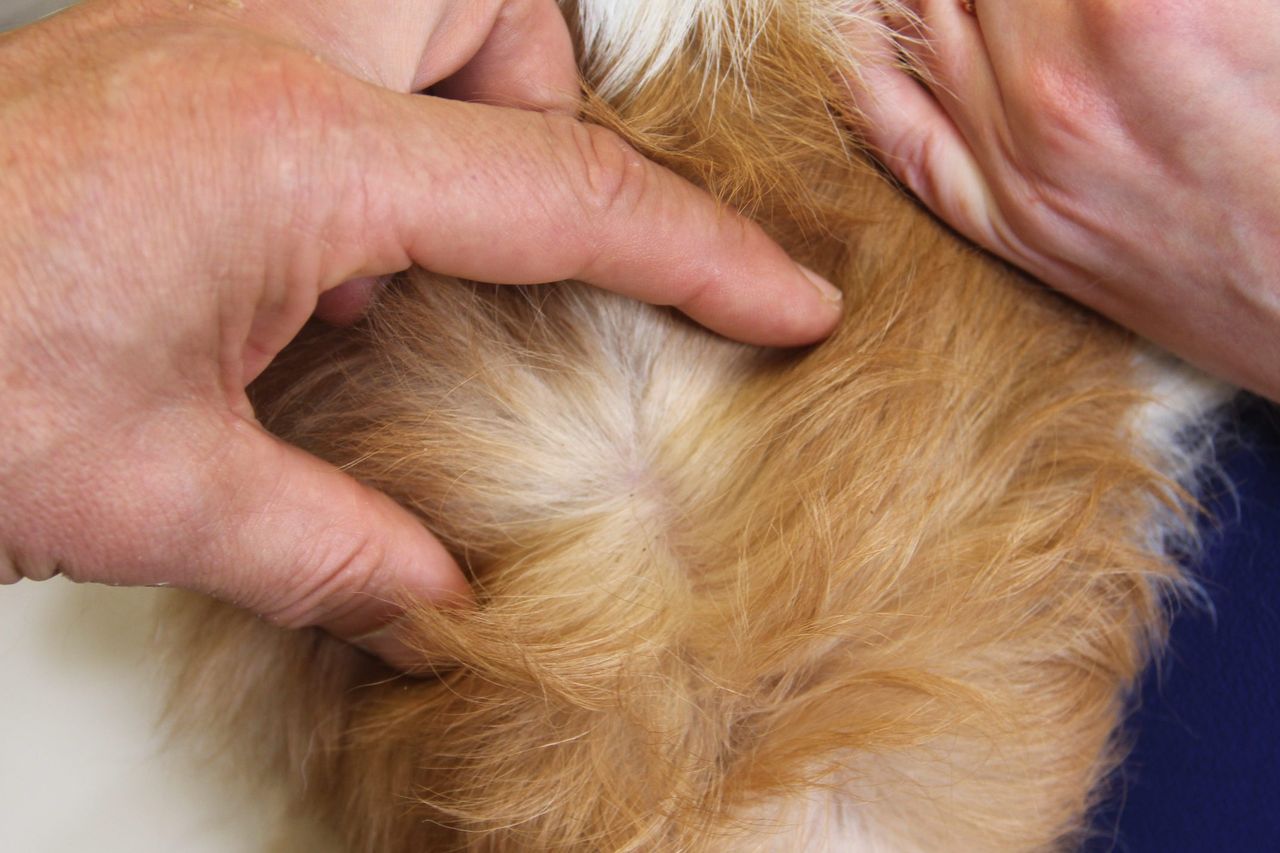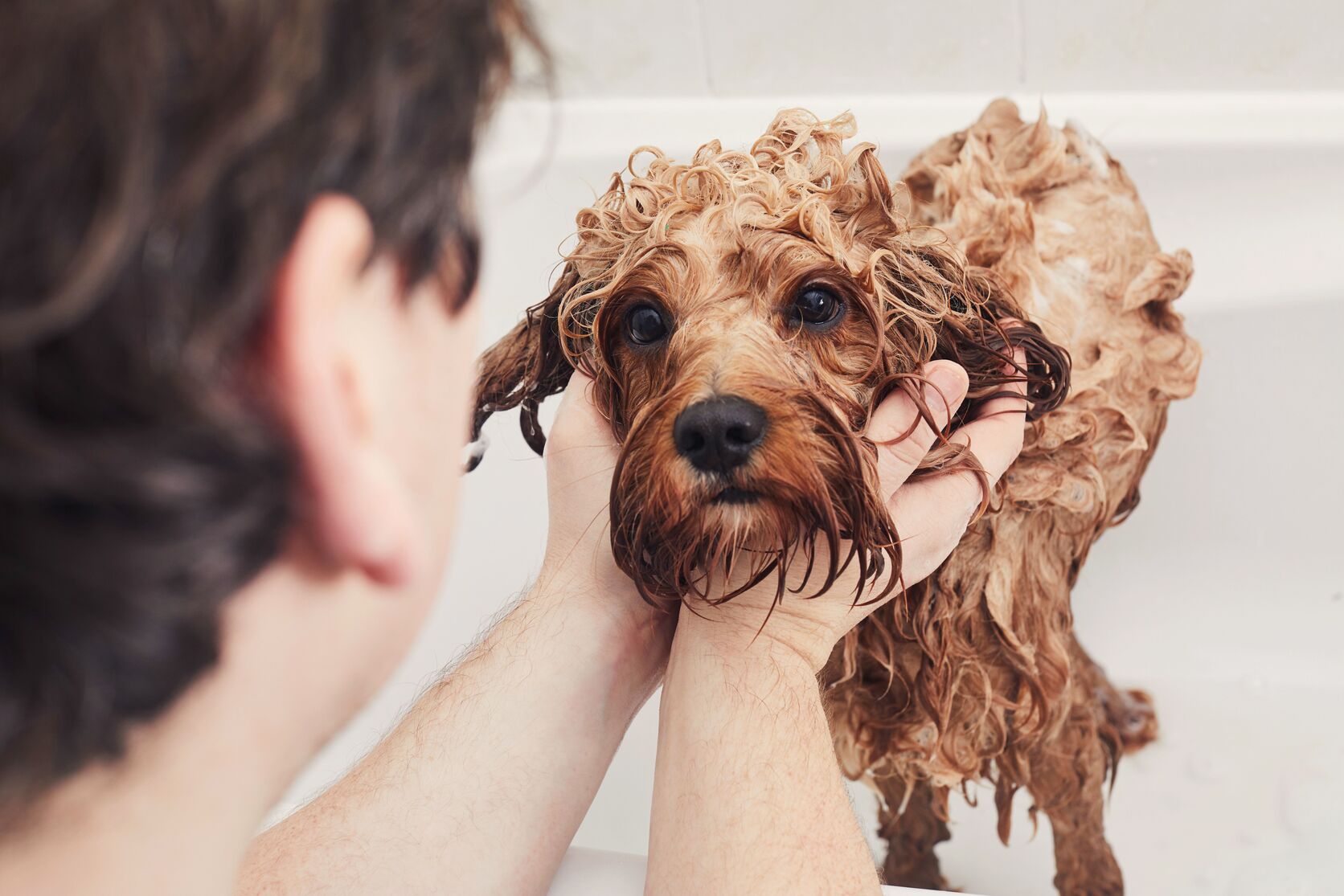Home>Health & Wellness>Common Health Issues>What To Do For Dogs Allergic To Fleas


Common Health Issues
What To Do For Dogs Allergic To Fleas
Published: January 25, 2024
Learn how to manage common health issues in dogs, including flea allergies. Discover effective solutions for your pet's comfort and well-being.
(Many of the links in this article redirect to a specific reviewed product. Your purchase of these products through affiliate links helps to generate commission for Pawsomeoldies.com, at no extra cost. Learn more)
Table of Contents
Understanding Flea Allergies in Dogs
Flea allergies are a common and distressing issue for many dogs. Unlike a regular flea infestation, where the irritation is caused by the presence of the fleas themselves, flea allergies in dogs stem from a hypersensitivity to the saliva of the fleas. When a flea bites a dog, it injects its saliva into the skin to prevent blood clotting, and it's this saliva that triggers an allergic reaction in sensitive dogs.
The allergic reaction is not immediate; instead, it typically takes several flea bites over time to provoke a response. This delayed reaction can make it challenging for pet owners to identify the source of their dog's discomfort, as they may not see any fleas on their pet. However, even a single flea bite can cause intense itching and discomfort for a dog with a flea allergy.
The allergic response is primarily due to a protein in the flea's saliva, which prompts the dog's immune system to overreact. This overreaction leads to symptoms such as intense itching, redness, and skin inflammation. Dogs may excessively scratch, bite, or lick themselves in an attempt to alleviate the discomfort, leading to hair loss and potential skin infections.
It's important to note that flea allergies can affect dogs of any breed, age, or gender. Additionally, environmental factors, such as climate and living conditions, can influence the prevalence of fleas and, consequently, the likelihood of a dog developing an allergic reaction.
Understanding the underlying cause of flea allergies in dogs is crucial for effective management and prevention. By recognizing the specific triggers and symptoms associated with this condition, pet owners can take proactive measures to alleviate their dog's discomfort and enhance their overall well-being.
Identifying Symptoms of Flea Allergies
Identifying the symptoms of flea allergies in dogs is essential for prompt intervention and effective management. While some dogs may exhibit classic signs of flea infestation, such as visible fleas or flea dirt (black specks resembling ground pepper) on their skin, others may display more subtle indications of a flea allergy. Understanding these symptoms can help pet owners differentiate between a regular flea infestation and an allergic reaction, enabling them to provide targeted care for their furry companions.
Common Symptoms of Flea Allergies in Dogs
-
Intense Itching: Dogs with flea allergies often experience relentless itching, particularly around the base of the tail, lower back, and hindquarters. They may scratch, bite, or lick these areas excessively in an attempt to alleviate the discomfort caused by the allergic reaction to flea saliva.
-
Skin Irritation: Flea allergy dermatitis can lead to redness, inflammation, and skin irritation. Affected areas may appear inflamed, and the skin may become sensitive to the touch. Continuous scratching and biting can result in the development of hot spots, which are painful, moist, and often infected areas on the skin.
-
Hair Loss: Due to persistent scratching and chewing, dogs with flea allergies may experience hair loss in the affected areas. This can result in patchy or thinning fur, and in severe cases, the skin may become raw and damaged.
-
Restlessness and Discomfort: Dogs suffering from flea allergies may exhibit signs of restlessness, irritability, and general discomfort. They may struggle to find relief from the incessant itching and may have difficulty resting or sleeping peacefully.
-
Secondary Skin Infections: Constant scratching and biting can break the skin, making it susceptible to bacterial infections. This can exacerbate the discomfort and lead to the formation of pustules, scabs, or crusts on the skin.
Observing Behavioral Changes
In addition to physical symptoms, it's important for pet owners to observe any behavioral changes in their dogs. Anxious or agitated behavior, excessive grooming, and a reluctance to be touched in certain areas can all indicate the presence of flea allergies.
By recognizing these symptoms and behavioral cues, pet owners can promptly seek veterinary care and implement targeted flea control measures to alleviate their dog's discomfort and prevent future allergic reactions.
Understanding the nuanced signs of flea allergies in dogs empowers pet owners to advocate for their pet's well-being and take proactive steps to address this common health issue.
Treating Flea Allergies in Dogs
Treating flea allergies in dogs involves a comprehensive approach aimed at alleviating the allergic symptoms, addressing existing flea infestations, and preventing future allergic reactions. By implementing a combination of veterinary care, targeted flea control measures, and supportive home care, pet owners can effectively manage their dog's flea allergy and improve their overall well-being.
Veterinary Intervention
Upon observing symptoms of flea allergies in their dogs, pet owners should seek prompt veterinary care for an accurate diagnosis and tailored treatment plan. Veterinarians may recommend various interventions, including:
-
Prescription Medications: Veterinarians may prescribe oral or topical medications to relieve itching, reduce inflammation, and manage secondary skin infections. These medications may include antihistamines, corticosteroids, or antibiotics, depending on the severity of the allergic reaction and any accompanying skin issues.
-
Flea Control Products: In addition to addressing the allergic symptoms, veterinarians may recommend specific flea control products to eliminate existing fleas and prevent future infestations. These products may include prescription-strength flea preventatives, environmental sprays, or oral medications designed to disrupt the flea life cycle.
-
Allergy Testing: In cases of severe or recurrent flea allergies, veterinarians may conduct allergy testing to identify specific allergens and develop immunotherapy treatment plans. This personalized approach aims to desensitize the dog's immune system to the allergens, reducing the severity of allergic reactions over time.
Home Care and Prevention
In conjunction with veterinary treatment, pet owners play a crucial role in managing their dog's flea allergy through diligent home care and preventive measures:
-
Regular Grooming: Regular grooming and bathing with flea-repellent shampoos can help soothe the dog's skin, remove flea debris, and reduce the presence of fleas. It's essential to use products recommended by the veterinarian to ensure their safety and effectiveness.
-
Environmental Control: Thoroughly cleaning and vacuuming the home, especially areas frequented by the dog, can help eliminate flea eggs, larvae, and adults. Washing the dog's bedding and treating the indoor environment with vet-approved flea control products can further minimize the risk of reinfestation.
-
Consistent Flea Prevention: Implementing year-round flea prevention measures, such as using vet-recommended flea preventatives and maintaining a flea-free environment, is essential for preventing future allergic reactions. Pet owners should adhere to the recommended flea control schedule and consult their veterinarian for guidance on choosing the most suitable preventive products.
By combining veterinary intervention with proactive home care and preventive strategies, pet owners can effectively manage flea allergies in their dogs, alleviate their discomfort, and promote a healthier, happier life for their beloved pets. Understanding the multifaceted approach to treating flea allergies empowers pet owners to take informed actions and prioritize their dog's well-being.
Preventing Flea Allergies in Dogs
Preventing flea allergies in dogs involves proactive measures aimed at minimizing the risk of flea infestations and allergic reactions. By implementing comprehensive flea control strategies and maintaining a vigilant approach to pet care, dog owners can significantly reduce the likelihood of their pets developing flea allergies. Here are essential steps to prevent flea allergies in dogs:
Regular Flea Prevention
Consistent use of veterinarian-recommended flea preventatives is fundamental in preventing flea allergies in dogs. These preventive products, available in various forms such as topical treatments, oral medications, and collars, effectively repel and eliminate fleas, disrupting their life cycle and reducing the risk of allergic reactions. Dog owners should adhere to the recommended application schedule and consult their veterinarian to select the most suitable flea preventatives based on their dog's age, health status, and environmental factors.
Environmental Control
Maintaining a clean and flea-free environment is crucial for preventing flea allergies in dogs. Regular vacuuming, especially in areas where the dog spends time, can help remove flea eggs, larvae, and adults from the home. Washing the dog's bedding and treating the indoor environment with vet-approved flea control products further minimizes the risk of flea infestations. Additionally, minimizing outdoor exposure to areas with high flea populations, such as tall grass and wooded areas, can reduce the likelihood of flea encounters.
Regular Grooming and Inspection
Frequent grooming and inspection of the dog's coat can aid in early detection of fleas and prevent allergic reactions. Regular brushing helps remove loose fur and debris, making it easier to spot any signs of flea infestation. Dog owners should pay close attention to areas where fleas commonly congregate, such as the base of the tail and the abdomen. Prompt removal of any detected fleas and their disposal in soapy water can prevent potential allergic responses.
Comprehensive Veterinary Care
Regular veterinary check-ups and consultations are essential for preventing flea allergies in dogs. Veterinarians can provide guidance on effective flea control measures, recommend suitable preventive products, and assess the dog's overall health to identify any underlying conditions that may exacerbate flea allergies. Additionally, veterinarians may offer personalized advice based on the dog's specific needs, such as recommending flea preventatives tailored to the local flea population and environmental factors.
Education and Awareness
Educating dog owners about the significance of flea prevention and the potential risks of flea allergies is crucial for fostering proactive pet care. Providing information on the signs of flea infestations, allergic reactions, and the importance of preventive measures empowers dog owners to take informed actions in safeguarding their pets' well-being. Furthermore, raising awareness about the seasonal variations in flea activity and the necessity of year-round flea prevention encourages consistent and proactive flea control practices.
By integrating these preventive strategies into their routine pet care, dog owners can effectively minimize the risk of flea allergies in their beloved companions. Proactive flea prevention not only enhances the dog's comfort and well-being but also contributes to a harmonious and fulfilling bond between pets and their owners.
Conclusion
In conclusion, understanding, identifying, treating, and preventing flea allergies in dogs is essential for promoting the well-being and comfort of our beloved canine companions. Flea allergies can cause significant distress and discomfort for dogs, leading to incessant itching, skin irritation, and potential secondary infections. By recognizing the nuanced symptoms of flea allergies and taking proactive measures, pet owners can effectively manage this common health issue and enhance their dogs' quality of life.
Through a comprehensive understanding of flea allergies, pet owners can differentiate between a regular flea infestation and an allergic reaction, enabling them to seek timely veterinary care and targeted treatment. Identifying the symptoms of flea allergies, including intense itching, skin irritation, hair loss, and behavioral changes, empowers pet owners to advocate for their dogs' well-being and address this condition effectively.
Treating flea allergies in dogs involves a multifaceted approach, encompassing veterinary intervention, home care, and preventive strategies. Veterinary care, including prescription medications, flea control products, and allergy testing, plays a pivotal role in alleviating allergic symptoms and managing existing flea infestations. Additionally, diligent home care, such as regular grooming, environmental control, and consistent flea prevention, empowers pet owners to actively participate in their dogs' treatment and well-being.
Preventing flea allergies in dogs requires a proactive and vigilant approach, encompassing regular flea prevention, environmental control, grooming, comprehensive veterinary care, and education. By integrating these preventive measures into their routine pet care, dog owners can significantly reduce the risk of flea infestations and allergic reactions, fostering a healthier and more comfortable environment for their pets.
In essence, the holistic management of flea allergies in dogs not only alleviates their discomfort but also strengthens the bond between pets and their owners. By prioritizing preventive care, prompt intervention, and informed decision-making, pet owners can ensure that their dogs lead happy, itch-free lives, free from the distress of flea allergies. Ultimately, the proactive management and prevention of flea allergies contribute to the overall well-being and happiness of our canine companions, enriching the lives of both pets and their devoted owners.












